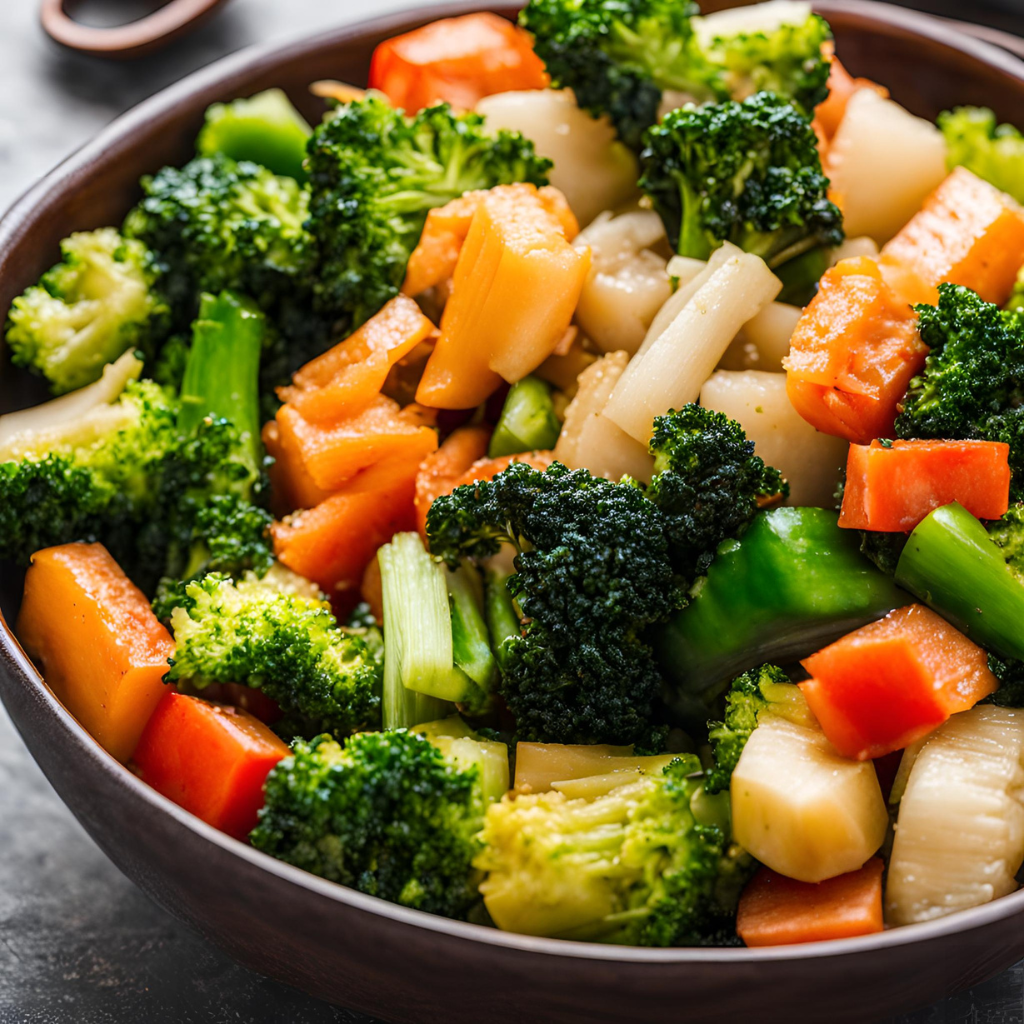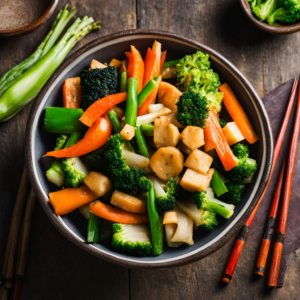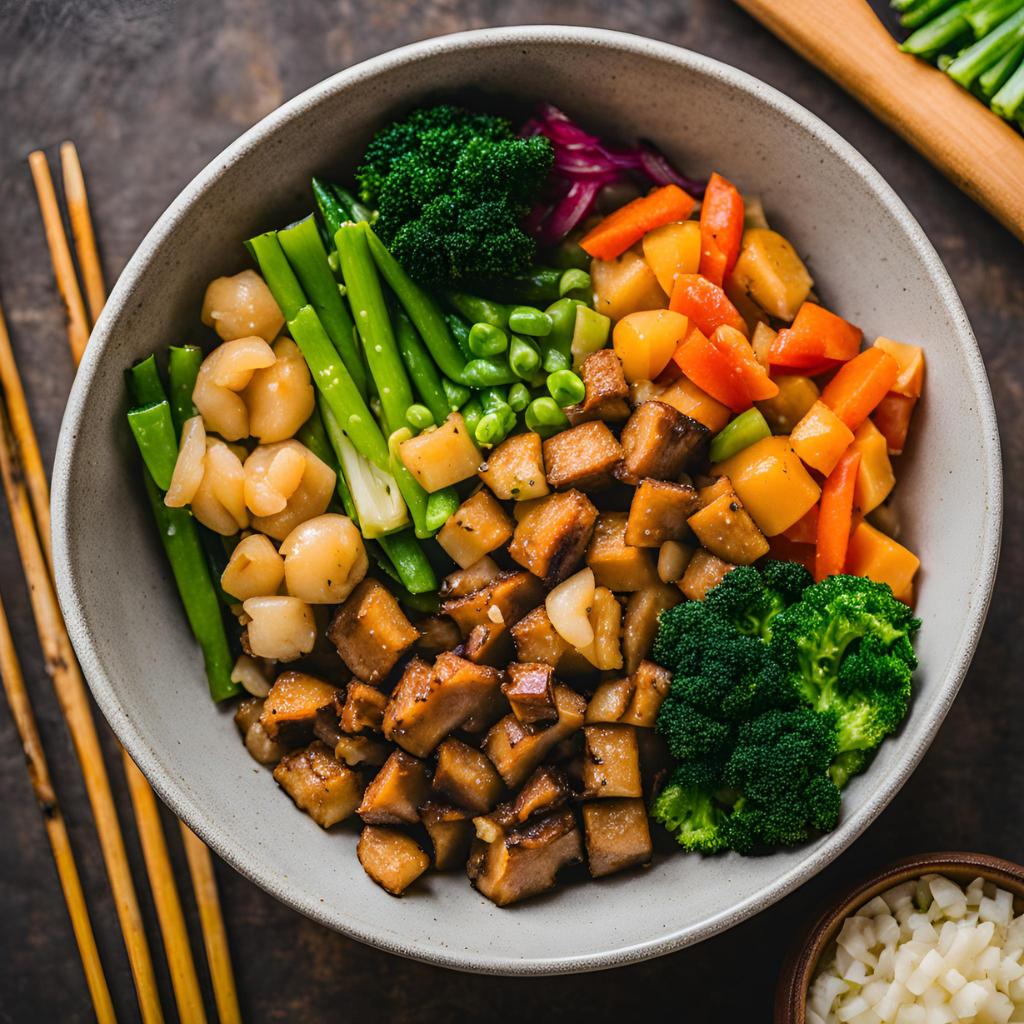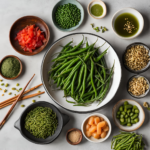Hibachi Vegetables is a delightful and vibrant dish that brings the excitement of Japanese cuisine right to your table. This colorful recipe takes simple, fresh vegetables and transforms them into a sizzling, flavorful medley, perfect for a healthy side or a light main course.
To create this delicious dish, start with a mix of crisp zucchini, tender mushrooms, sweet bell peppers, and crunchy broccoli. Add a touch of garlic, soy sauce, and a hint of sesame oil for an authentic hibachi taste. Stir-fry the vegetables until they are perfectly tender-crisp, allowing the natural flavors to shine through. The result is a stunning and nutritious treat that’s sure to delight your taste buds.
Ideal for family dinners or festive gatherings, this recipe is quick to prepare and offers a burst of flavor in every bite. Each mouthful delivers a combination of tender vegetables with a savory, rich taste, similar to a classic Steamed Chard or Spicy Red Quinoa Salad. Savor the fresh, vibrant goodness of Hibachi Vegetables and add a new favorite to your collection of healthy, easy-to-make recipes.
Overview: How To Make Hibachi Vegetables?

Step 1: Sauté Aromatics
In a pan over medium-high heat, melt the butter and add the oil. Cook the garlic and onions for about 2 minutes until they are soft and fragrant.
Step 2: Add Vegetables and Sauces
Add the zucchini, carrots, broccoli, and mushrooms to the pan. Pour in the soy sauce and teriyaki sauce, seasoning with salt and pepper to taste.
Step 3: Cook and Serve
Continue to cook for 10 minutes until the vegetables are tender. Serve hot, garnished with toasted sesame seeds.
Why You Will Love This Recipe?
Hibachi Vegetables is a delightful and vibrant dish that brings the excitement of Japanese cuisine right to your table. This colorful recipe takes simple, fresh vegetables and transforms them into a sizzling, flavorful medley, perfect for a healthy side or a light main course.
The mix of crisp zucchini, tender mushrooms, sweet bell peppers, and crunchy broccoli offers a beautiful array of textures and colors. Cooking Hibachi Vegetables is a breeze, making it an ideal choice for busy weeknights or impromptu gatherings.
The addition of garlic, soy sauce, and a hint of sesame oil imparts an authentic hibachi taste that is both savory and satisfying. Each bite bursts with a combination of flavors that will keep you coming back for more.
This dish is not only delicious but also incredibly nutritious, packed with vitamins, minerals, and antioxidants from fresh vegetables just like Ina Garten’s Greek Salad. It’s a wonderful way to enjoy a wholesome meal that feels indulgent yet remains light and healthy.

Hibachi Vegetables
Equipment
- 1 Large Skillet or Wok
Ingredients
- Salt and pepper to taste
- 2 tbsp butter
- ½ tsp sesame seeds
- 1 tbsp oil
- 2 tbsp teriyaki sauce
- ½ tbsp garlic, minced
- 1 tbsp soy sauce
- ½ medium sweet/yellow onion, roughly chopped
- 8 oz quartered mushrooms
- 2 cups broccoli florets
- 1 zucchini, cut into thin strips
- 1 cups carrots, sliced
Instructions
- Over medium-high heat, melt the butter and add the oil.
- Sauté the garlic and onions for about 2 minutes until they soften.
- Introduce the zucchini, carrots, broccoli, and mushrooms to the pan.
- Stir in the soy sauce and teriyaki sauce, then season with salt and pepper according to your preference.
- Cook the vegetables for 10 minutes until they become tender.
- Transfer to a dish and serve hot, garnished with toasted sesame seeds.
Notes
- Feel free to swap in your favorite vegetables or whatever you have on hand.
- If you prefer a spicier kick, consider adding a dash of chili flakes or a drizzle of sriracha to elevate the flavor.
Nutrition Facts:
| Nutrition | Value |
|---|---|
| Calories | 150 kcal |
| Carbohydrates | 13.2 g |
| Protein | 4.9 g |
| Vitamin A | 330.9 IU |
| Vitamin C | 47.2 mg |
| Sugar | 6.8 g |
Helpful Tips For You

- Choose Fresh Vegetables: Start by selecting fresh, high-quality vegetables. Cut them into uniform sizes to ensure even cooking and a pleasing presentation. A sharp knife and a steady hand will help you achieve the perfect slices and pieces.
- Preheat Your Cooking Surface: Preheat your skillet or griddle before adding the vegetables to achieve a nice sear and cook them quickly without making them mushy. A hot cooking surface will help retain the vegetables’ natural crispness and vibrant color.
- Avoid Overcrowding: Don’t overcrowd the pan; cook in batches if necessary to give each vegetable piece enough space to cook evenly. Overcrowding can cause the vegetables to steam, resulting in a less appealing texture.
- Add Finishing Touches: Finish the dish with a sprinkle of sesame seeds or chopped green onions for added flavor and visual appeal. Serve immediately to enjoy the vegetables at their peak freshness and flavor.
What to Serve With Hibachi Vegetables?

- Ina Garten’s Greek Salad
- Chinese Cucumber Salad
- Hibachi Salmon
- Grilled Lemon Pepper Chicken
- Tuscan Butter Shrimp
Frequently Asked Questions (FAQs)
What can I serve with Hibachi Vegetables?
Hibachi Vegetables pair well with steamed rice, grilled tofu, shrimp, or salmon. You can also serve them alongside miso soup or a fresh salad for a complete meal.
Can I add protein to this dish?
Absolutely! You can easily add proteins like tofu, tempeh, shrimp, or chicken to make it a heartier meal. Simply cook the protein separately or alongside the vegetables, adjusting the cooking time as needed.
Is this recipe vegan?
Yes, Hibachi Vegetables are vegan as long as you use plant-based sauces. Check the labels of your soy sauce and teriyaki sauce to ensure they are free from animal products.
What vegetables can I use for Hibachi Vegetables?
You can use a variety of vegetables, including zucchini, bell peppers, broccoli, carrots, mushrooms, and snap peas. Feel free to mix and match based on your preferences or what you have on hand!
Can I make Hibachi Vegetables in advance?
While it’s best enjoyed fresh, you can prepare the vegetables in advance by chopping them. Store them in an airtight container in the refrigerator. However, it’s recommended to cook them just before serving to maintain their crispness.





